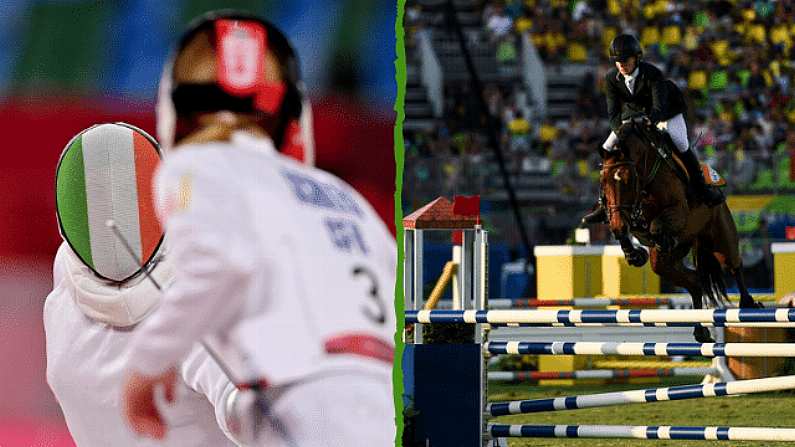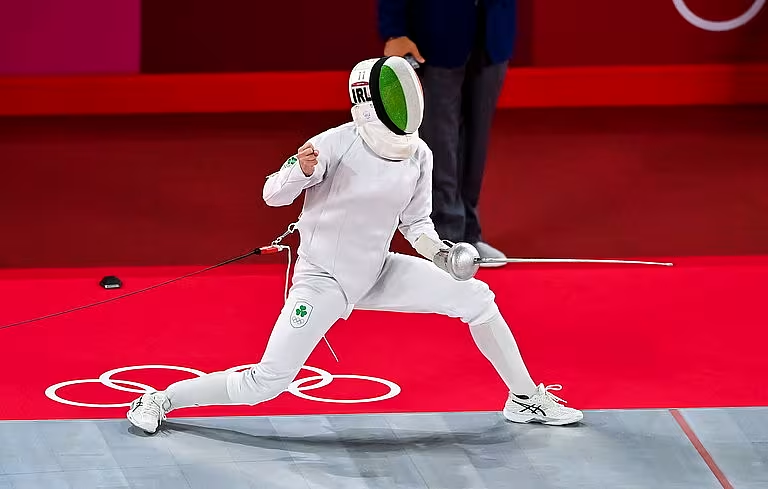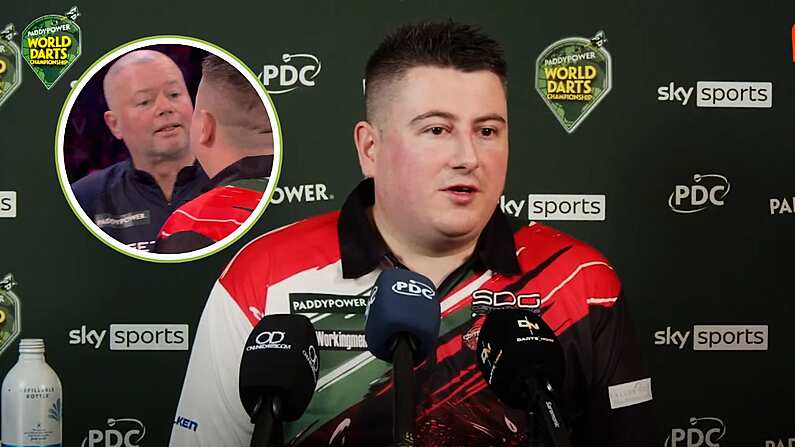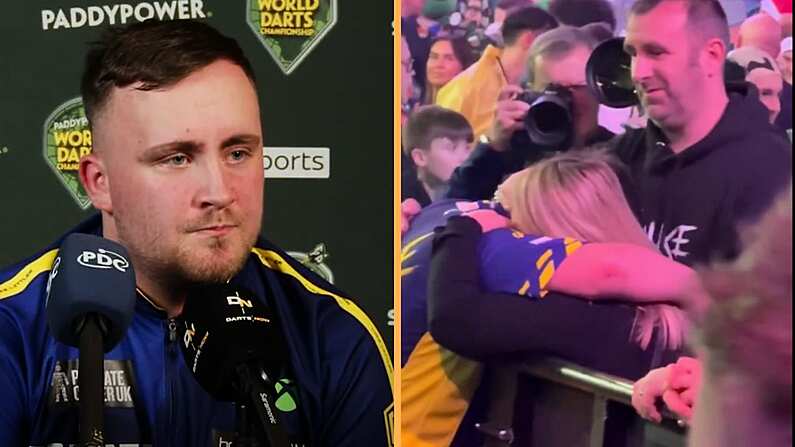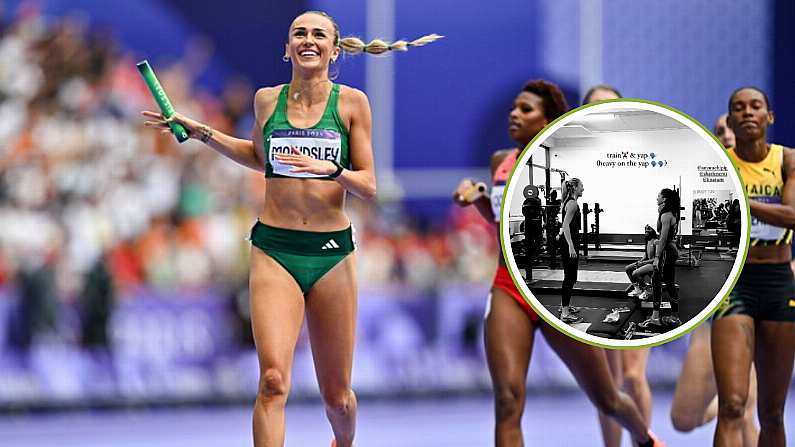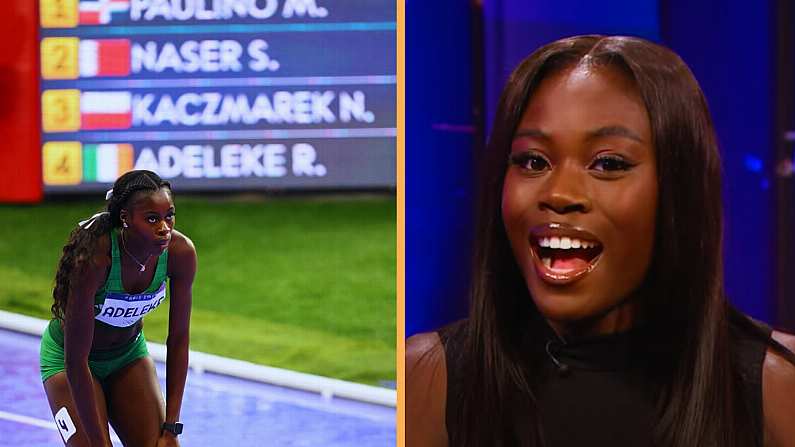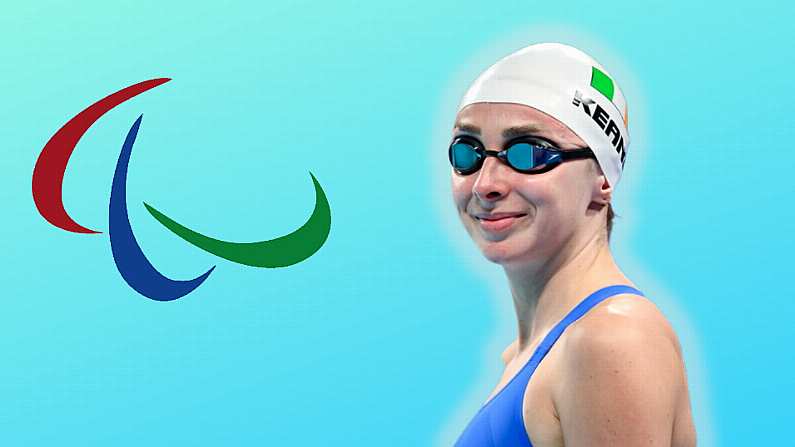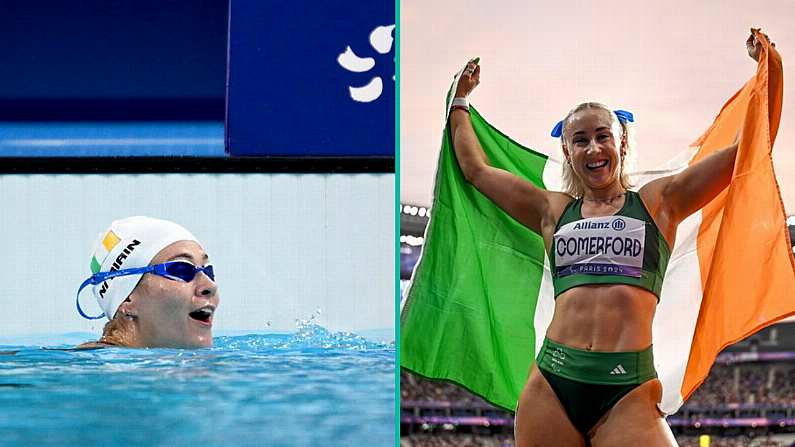On Thursday morning in Tokyo, Natalya Coyle got her third Olympics off to a terrific start by finishing third in the opening fencing event.
She's back tomorrow for the rest of the event and we're here to help you understand how the Modern Pentathlon works.
'I'm absolutely buzzing after that. I think I'm 90% adrenaline, 10% caffeine'
Natalya Coyle is delighted as she is tied third after fencing event today #modernpentathlon #olympics #tokyo2020 #ireland
📺 Watch live - https://t.co/BjyJKrGcju
📱 Updates – https://t.co/DMXbyiGFtE pic.twitter.com/V9R5AGugya— RTÉ Sport (@RTEsport) August 5, 2021
Prior to 1996, Modern Pentathlon was held over four or five days and consisted of five separate events; fencing, equestrianism (show jumping), swimming, shooting and running.
For 1996 it was decided that all events would take place on the same day.
In 2012, they combined the shooting and running events into a single laser-run event. 2016 saw the introduction of a bonus round in fencing and now we're up to date.
Don't worry, it's not as complicated as it sounds.
The opening event is the round-robin fencing event with each competitor fencing the 35 others once. The goal is get 25 wins which will earn you 250 points. Each win over that is worth six extra points, each defeat below that takes 6 point away.
In today's round the leader was Annika Schleu of Germany. She won 29 bouts so earned 250+(4x6) for a total of 274. Natalya Coyle was just two shy of the 25 wins so she earned 238 points. The lowest ranked fencer has 124 points.
The next event is a 200m swim (in a pool). There's a standard here too with 250 points on offer for finishing in 2m30s but every athlete in 2021 should easily beat that. Every one third of a second inside that time will earn one extra point.
At the 2021 World Cup final Coyle swam 2:17:06 which earned her 276 points. A difference of 32 points covered the entire field with Coyle roughly in the middle. Don't worry we'll get to what the points mean soon.
The second event on day two is the fencing bonus round. This is a much shorter event than the round robin and effectively works as "winner stays on". Each win is worth one point.
The third event is the one that requires most luck.
Each competitor is randomly assigned a horse (from an approved pool) and they must ride them over 15 show jumping obstacles (against the clock). A clear round inside the time is 300 points with each fault being deducted from that 300 score.
In Rio the gold medal favourite, 2015 World Champion Lena Schoneborn, was eliminated at this stage as her horse wouldn't co-operate with her.
So now we have our points tally and we're off to the final event; the laser-run. The leader on points starts first with the rest of the field starting in points order. The starts are staggered based on the points total with each point worth a one second head start. The event itself is a cross country run measuring 3.2km.
There are four shooting stops during the run where the athletes have to hit five targets. The sooner they hit the targets, the sooner they can resume running. If they haven't hit the five targets after 50 seconds, they can move on anyway.
The athlete who crosses the finishing line first is the winner. The second across the line wins silver and so on.
Effectively the fencing, swimming and show jumping are played out to give the athletes as big a head start as possible for the final deciding event.
Swimming begins at 06:30 tomorrow with the final laser run scheduled to start at 11:30am Irish time. Let's keep our fingers crossed we're in contention for what is always an exciting event to watch.

